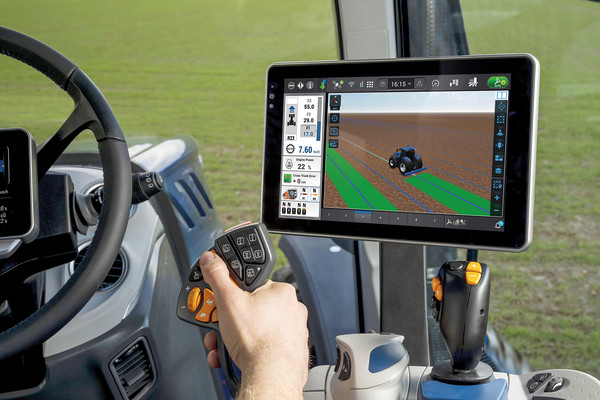
Connectivity and remote control in agricultural machinery
The use of telemetry in agriculture, i.e. systems for the remote control of agricultural machinery, dates back to 2002. Initially designed to know the position of a machine, these technologies have evolved to become the mainstay of data interchange between the machine, the user and the after-sales service
Telemetry and remote control, the core technologies of the smart farm, are terms used to describe a conceptually simple but technologically very advanced function: that is, the ability to control what a machine is doing even kilometres away. The farmer can do this, to know where his tractors are and what they are doing, but so can the workshop, if authorised by the owner. The use of telemetry in agriculture dates back to 2002. Back then it was used to know the exact position of the machine, today it is the mainstay of data interchange between machine, farm headquarters and workshop/dealer. Several manufacturers have equipped themselves with Data Connect, which allows the entire fleet to be viewed on a single platform. They activate an analysis service regarding the operation of the machines; thus, with the owner's authorisation, the information can also reach the dealer, who can check the correct operation of the vehicle and suggest any interventions or simple software updates. With Data Connect, it is also possible to acquire information on the machine's operation, alerting if it leaves the owner's perimeter, and to schedule maintenance. For most manufacturers, the system includes a device to be installed on board the agricultural machine for GPS tracking, monitoring, management of remote controls (starter lock) and two-way data transmission, which is associated with a CANBUS interface specifically programmed for reading and interpreting telemetry and diagnostic data from the agricultural machinery. The system also provides access to a cloud-based software platform to use localisation, monitoring, telemetry and diagnostics services, as well as planning functions referring to processing areas and detailed certification of activities carried out daily. In order to optimally manage these technologies, software support and maintenance of the devices installed on the machinery is essential. The device installed on board the agricultural machine is connected to the machine's power supply system and constantly collects information relating to the main operating parameters of the machine. In particular, the information needed to remotely monitor the status of agricultural operations in real time (data relating to GPS position, speed, direction, working hours, status of the vehicle's stop and movement) and the state of use of the machinery. The CAN interface enables connection to the electronic control units to acquire all data and salient parameters (such as, for example, the mileage progress) for machine maintenance purposes. The CANBUS interface is specifically programmed for reading and interpreting telemetry data from agricultural machinery. The usefulness of these systems when a malfunction or warning message is received from the tractor is indisputable. It reaches the owner of the farm, the mechanics at the dealership or the relevant workshop, who, by interpreting the error codes, can understand the nature of the problem within a few moments. At that point, the technician can call the operator and ask for the go-ahead to enter - remotely, of course - into the terminal and check what is going on. Suggesting what countermeasures to take and checking, in particular, whether some downtime is necessary or whether the malfunction cannot be resolved, rather, with some minor intervention. This is one of the remote control applications that is commonly referred to as remote service. All the data collected is transmitted in real time via the internet to the cloud platform; in the event of a momentary absence of the data network at the farm machine's location, the on-board device is able to store it and transmit it as soon as the connection becomes available again. This second mode is not to be relied on in a smart system; it is therefore hoped that the deployment of the new 5th generation data transmission systems, i.e. 5G, will eliminate the gap related to lack of coverage and particularly long latency times. The platforms can be organised into different logical environments (real-time, historical data, archives, planning, reports and utilities) that can also be used in parallel and that offer an easier organisation of information and functions according to the users' purposes of use. Just as different user profiling is possible, the platform provides for profiling i.e. 'Farm' user and 'Maintenance Workshop' user. Today, these technologies enable performance and information that was once unimaginable: displaying the current position of all machinery on the map, framing a vehicle on the map, following it during its movements, displaying the route and work carried out during the day, and highlighting stopping points with their duration and time. Among the most interesting applications is the possibility of drawing working areas on the map and planning activities by associating to each area one or more agricultural machines to which to entrust the work, and thus the scheduling of operations. But it is also possible to check the status of the work in each area by accessing both real-time data and historical data with consultation of the tracks (historical route taken by the vehicle) and the status of the sensors for each of the surveyed positions.








